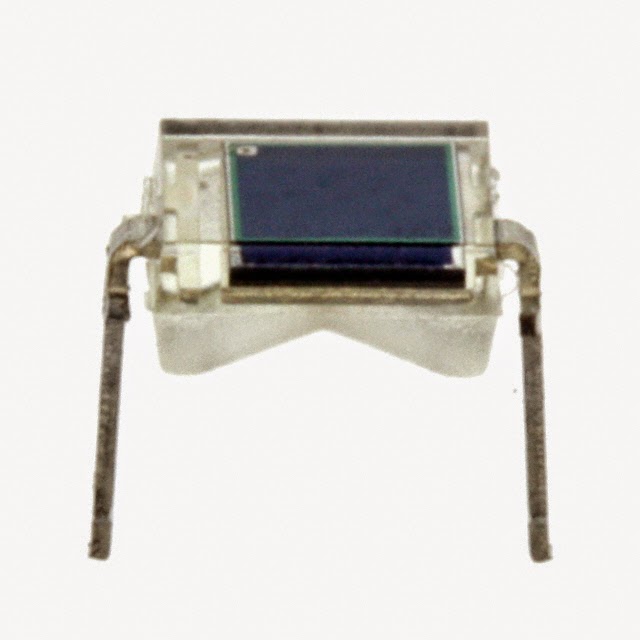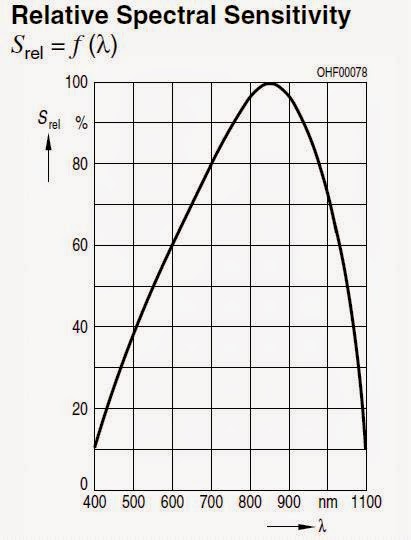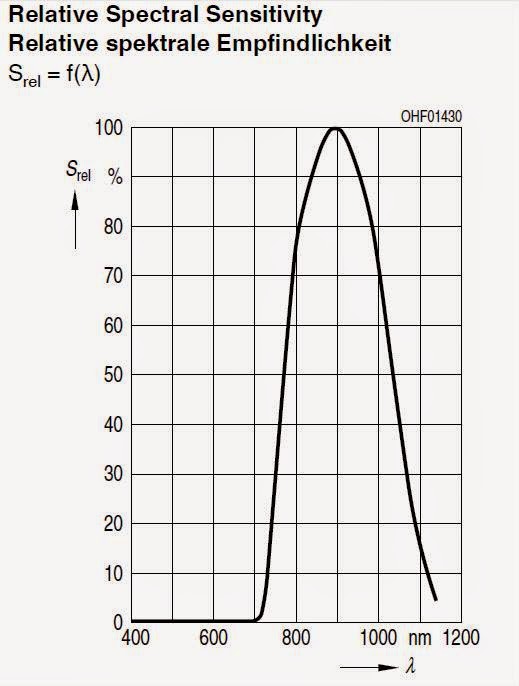 On Making Nanowaves – Part 3
On Making Nanowaves – Part 3
Having studied many of the receiving systems being used by others, it seemed that designs ran from the 'very simple' to the 'very sophisticated'. Once again I looked to Roger's experimental work involving receivers since the one he had been using had evolved over a period of several months and several tweaks. The design that he used was an adaptation of the original low-noise PIN diode laser receiver designed several years ago by K3PGP and shown here on K3PGP's Experimenter's Corner.
Roger's adaptation, shown below, appeared to be getting excellent results when used in his over-the-horizon clear air scattering tests.
Although Markus, John and myself all built the same design, it is interesting to see the end results, as each used a different construction method.
John chose to use perfboard and point to point-to-point wiring:
 |
| VE7BDQ's Perfboard RX |
 |
| VE7SL's PCB RX |
 |
| VE7CA's Dead-Bug Style RX |
 All of us used the Osram BPW34 PIN diode for the detector after having it recommended by Clint in e-mail 'detector discussions' as being a good performer . It is still readily available from the usual places, at around eighty-cents.
All of us used the Osram BPW34 PIN diode for the detector after having it recommended by Clint in e-mail 'detector discussions' as being a good performer . It is still readily available from the usual places, at around eighty-cents.  |
| BPW34 Spectral Range |
Many silicon PIN photodiode detectors are available with filters that let them achieve maximum sensitivity at the lower IR range while blocking the unwanted higher frequency visible light sources. Such is the case with this one, available as the BPW34FA. If you wanted to run an all IR system, reducing visible light QRM, this detector might be a better bet.
 |
| BPW34FA Spectral Range |
When it comes to diode detectors, there are always new challengers appearing in the marketplace. There are still many opportunities for experimenting when it comes to optimizing the front-end of your receiver.
When coupled with its focusing lens in the final stage of construction, the receivers are amazingly sensitive. Even the slightest hint of a light source, often invisible by eye, would produce a response from the system....even starlight!
One of the first sounds detected was a low-pitched and repetitive 'thump-thump' which turned out to be the wingtip strobe lighting of jet aircraft activity approaching and departing Vancouver International Airport. After several nights of listening it was apparent that the strobe lighting could be detected from at least 70 miles out and from aircraft still above 10,000'. Panning over to the runway (about 25 miles away), I could often detect the strobes from departing aircraft even though they had not appeared above my sea-level horizon. Eventually I would see them rise above the horizon, about a minute after hearing them on the runway while on their takeoff roll. I suspect the propagation mode would be a form of clear-air scatter since there was no direct line-of-sight to the signal source when initially heard.
Panning the receiver slowly along the many miles of coastal mainland, on the other side of Georgia Strait, revealed many signals, most of them with different audio signatures. Some sounded rough and buzzy, like an unfiltered CW note, while others were T9 and very clean. Most had different repetition rates resembling radar sweep speeds but, once again, most sources were not visible to my eye...nor were they located when scanning the signal source with binoculars. I suspect that most signals were from various fixed lighting installations either strobe lighting or area flood lighting. Some targets appeared to be slowly moving and were found to be coming from tankers and container ships travelling along the far coast line. Hearing so many of these modulated lightwave signals was certainly an interesting experience and something I had not really expected. Even individual stars would produce a detectable 'hum' as the receiver/lens combination was aimed directly at them.
My one and only daylight test revealed extremely high levels of hum from the bright sky and, no doubt, front end overload desensitising....but the sudden sound of a buzzing bee in the headphones turned out to be just that, as the reflected light from its wings was being modulated by the rapid flap-rate....all very eye-opening to me and totally unexpected.
Here are some recent audio recordings made during a period of heavy cloud cover over Georgia Strait. All are on the far mainland coast or further inland and most sources were not visible to my eye.
- Landing aircraft strobes at Vancouver International ~ 30 miles.
- Aircraft over Georgia Strait, ~ 40 miles.
- Unidentified with odd repetition rate.
- Washington coast unidentified ~ 30+ miles.
- Washington coast unidentified 2.
- Washington coast unidentified 3.
I think such a system would make a wonderful 'science-fair' project for a budding student, complete with recordings....but perhaps it has all been done before!
For a very in-depth study of various current RX designs, see the Optical Receivers page of KA7OEI.
With all three receivers working well, the transmitters would be next....













Hi Steve,
afaik you are also active on 2km and 630m. Did you ever consider to hook up your lf/mf rig to your optical rx/tx ? This way you get around all the trouble af based stuff is causing. My hunch is that you might gain at least 20 dB that way: it is possible to bias the photdiode using a paralell resonant circuit. This way you get rid of all dc/af modulated signals. You then can increase sensitivity as is usual in a radio context – and you can use all that weak signal reception trickery common to radio these days (thing WSJT etc.).
55 es 73 de Karl-Max
The limitation to ultimate sensitivity is thermal, due to real-world components. Using practical photodetectors, the capacitance of the higher-frequency signals (e.g. LF/MF) simply swamps them below the threshold of detection – even if you are talking about receiver sensitivities with <=1dB noise figure.
Interestingly, there is also a "probability" issue that shows up at very low light levels, the result being that one ends up with probability-related (quantum) effects – also known as noise!
At audio, using ambient light levels that would be found outside in areas where there is some level of starlight, this is unlikely to be an issue at audio frequencies, particularly with devices like photodiodes that aren't the "ne plus ultra" when it comes to sensitivity.
At MHz frequencies, I've found this to be an issue – when using things like photomultiplier tubes – where, at low light levels, the signals were noisy due there being too few photons-per-cycle to "fill in" the sine wave in the MHz range – a very odd effect to witness where the amplitude didn't really change much with frequency, but the "noisy-ness" did!
The only way around this? Increase the amount of signal arriving at the detector by emitting more power at the transmitter and/or using a larger aperture (lens) at the receiver.
Practically speaking, if you only want to go a few 10's of kilometers/miles and the air is fairly clear, given reasonable optics and a half-decent design of the electronics, one can afford to lose 10-30dB of link margin (depending on the modulation, frequency, and devices used) that would occur by using these higher "subcarrier" frequencies and still get good results as has been demonstrated time and again by our U.K. friends with their optical "transverter" designs.
73
Hello Karl….to answer your initial inquiry….no, I have not considered this. As Clint has indicated, there is not a lot to be gained using the subcarrier approach other than to be able to use some of the normal bells and whistles of the main radio or transceiver being employed and more likely an overall loss when using the same size of optics as our baseband system. As well, there is no other activity here, unlike the UK, where there are enough guys using subcarrier to make it an interesting approach to explore.
Steve 73